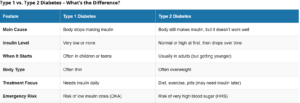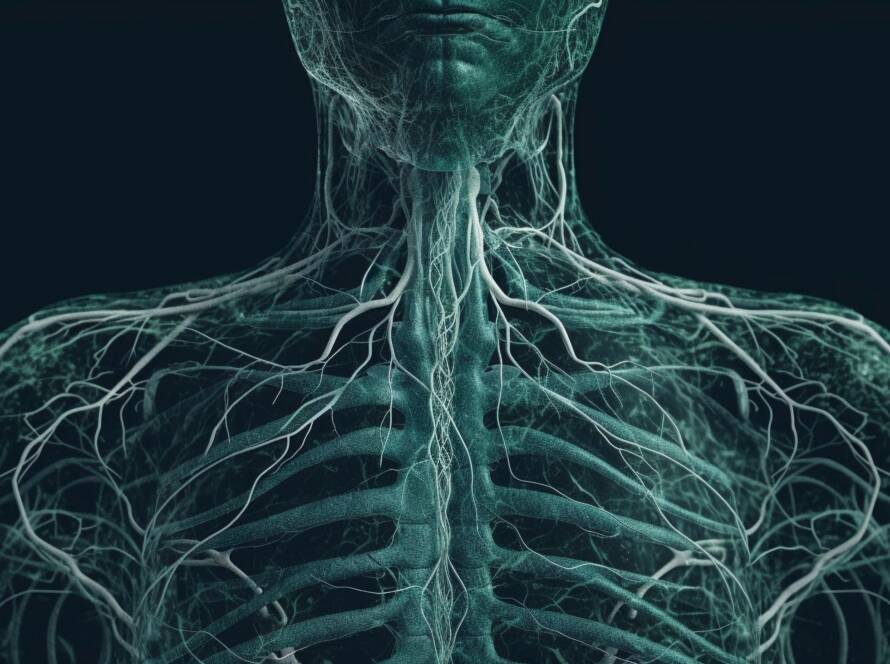How People Are Managing Diabetes Beyond Medication
Managing diabetes isn’t always straightforward.
Some people take medication every day but still struggle with blood sugar swings. Others try changing their diet or exercise routine, yet results vary. Many ask, “Will I need meds for the rest of my life?” Because everyone’s body is different, more people are starting to explore other ways to support their health, looking at sleep, digestion, energy, and overall balance.
In this article, we’ll explore how some people are learning to manage diabetes in their way—step by step. You’ll meet two individuals, Robert and Bradley, who each took a different path beyond just medication. Their stories might offer ideas or simply some hope for your journey.
Rethinking Diabetes: It’s More Than Just High Blood Sugar
Most people hear “diabetes” and picture a meter flashing high glucose. Yet that number is only the symptom, not the root.

Over time, both types can affect more than just sugar levels. Many people feel numbness, stomach issues, blurry vision, poor sleep, and a low mood. Why? Because diabetes puts stress on the whole system, not just the pancreas.
To truly support the body, it’s important to care for the nerves, digestion, sleep, and overall energy, not just blood sugar. That’s why more people are exploring ways to help their body stay balanced, not just lower a number.
What Is Frequency Support
Your body runs on rhythms—heartbeat, brainwaves, even how cells talk to each other. All of these have natural frequencies. When your body is healthy, these signals stay in sync. But when stress or illness hits, the rhythm can go off track. Frequency support is a gentle, non-invasive way to help your body restore balance, gently and naturally.
How does this relate to diabetes?
Some people use frequencies to support:
- Pancreas function
- Blood sugar balance
- Nerve health, energy, and sleep
- And more
They find it helps the body respond better, not just to sugar, but overall. It’s not a drug. It’s a gentle method that fits into their daily routine.
How Robert and Bradley Are Taking Control of Their Diabetes

Robert – 74 years old, Type 2 Diabetes
Background
Robert began studying herbs in the 1970s after recovering from a serious illness. Though he believed in natural healing, years of poor eating eventually led to type 2 diabetes.
Challenge
For 15 years, his blood sugar was unstable. He felt tired and unwell, and things got worse until he knew he had to make a serious change.
Methods
With help from a wellness counselor, Robert developed a gut-focused nutrition plan. He also started using Frequency Healing Remote Mode with XM generators. Despite initial skepticism, he found it helpful—especially for seizures and overall energy.
He runs a chain of programs to support:
- Gut & detox: Leaky Gut Sweep (XTRA), Auto Intoxication (CAFL), Leaky Gut Syndrome (ETDF)
- Blood sugar: Diabetes Mellitus Type 2 (ETDF), Diabetic Adiposity (BIO)
- Circulation & nerves: Circulation Diabetic (XTRA), Circulatory Stasis (CAFL), Nerve Disorders and Neuropathy (CAFL)
Results
After three years of combining frequency sessions and nutrition, his blood work returned to normal. He’s now focused on long-term balance and prevention. “Even when the illness improves, the body still needs help recovering. That’s where frequency helps the most,” Robert says.

Bradley Johnson – Type 1 Diabetes Since Childhood
Background
Bradley was diagnosed with type 1 diabetes at just 4 years old. Over the years, he went through many treatments—including a pancreas transplant. Unfortunately, the transplant failed, and he later had to manage organ rejection and the side effects of heavy medication.
Challenge
After years of standard treatment, Bradley wanted to take a more active role in supporting his body. He was looking for a way to reduce dependency on medication and improve stability, especially during the night.
Methods
Bradley began using frequency programs focused on two goals:
- Helping the body rebalance (e.g., pancreas, digestion, insulin function)
- Clearing potential interference (e.g., microbial triggers or inflammation)
At night, he also placed insulin in a scalar energy field during frequency sessions, hoping it would help stabilize overnight glucose.
Programs he used include:
- Diabetes support:
Diabetes 1-1 (BIO), Diabetes 1 (CAFL), Diabetes Insulin-Dependent (ETDF), Diabetes Juvenile-Onset (ETDF), Diabetes Mellitus Type 1 (ETDF), Diabetes Mellitus, Stable (ETDF), Diabetes Type 1 (Alternate Set) (ETDF), Insulin-independent diabetes (BIO), IDDM (ETDF), Exocrine Pancreatic Insufficiency (ETDF)
- Preset chains:
DH Experimental Frequencies > 0219 Diabetes Correction and Balance (no Meds)
Spectro Chrome Light Therapy > Diabetes Mellitus Type I + II (Remote)
Results
Bradley shared that his A1C dropped from 7.3 to 6.1. Under his doctor’s guidance, he has also reduced two types of insulin. He continues adjusting and observing his response over time.
Conclusion
Diabetes isn’t just about managing numbers. It’s about finding what helps your body feel more stable, more energized, and more at ease.
For Robert, that meant better gut health and gentle frequency sessions.
For Bradley, it meant exploring deeper causes and building his support routine.
Their paths were different, but both took the time to listen to their bodies and try what felt right.
If you’re still figuring things out, that’s okay. Small steps matter. Learning from others can help spark your ideas. You don’t have to do this alone.
👉 Want to hear more real experiences or share your own






